When it comes to safeguarding digital assets, a hardware wallet remains one of the most reliable defenses against theft, phishing, and exchange collapses. Unlike mobile or desktop wallets, which stay connected to the internet, hardware wallets keep private keys offline, making them far less vulnerable to hackers. Over the past decade, two brands have dominated this niche: Trezor and Ledger. While Ledger has devices like the Nano X, Nano S Plus, and the sleek Ledger Stax, Trezor has focused on simplicity, transparency, and open-source trust. The newly launched Trezor Safe 5 is a continuation of that philosophy, but with meaningful upgrades.
The Safe 5 is designed as a direct successor to the Trezor Model T, bringing in a larger color touchscreen, a more durable build, and advanced recovery methods like Shamir Backup. It combines user-friendly design with powerful cryptographic security, appealing to both newcomers who just bought their first Bitcoin and long-term investors managing a diverse portfolio of tokens. Where Ledger emphasizes a proprietary secure element and services like Ledger Recover, Trezor leans into open-source firmware, transparent security practices, and a broader philosophy of self-custody.
In this review, we’ll break down everything you need to know: from the design and build quality of the Safe 5, to its day-to-day usability, coin compatibility, backup options, and how it stacks up against not just Ledger devices, but also metal backup tools like the Cryptotag Zeus, Cryptosteel Capsule Solo, and The Billfodl. By the end, you’ll know whether the Trezor Safe 5 is the right tool for your crypto security, or if alternatives like Ledger Nano X or a robust backup solution might make more sense for your needs.
Quick Summary
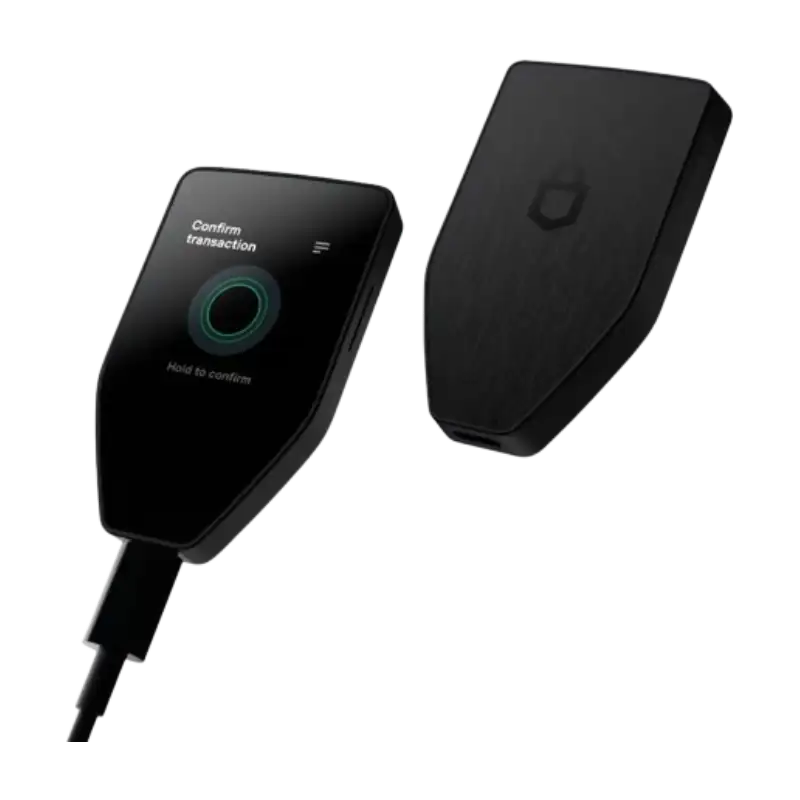
The Trezor Safe 5 strikes a balance between usability and transparency. Its open-source firmware and Shamir Backup make it an excellent option for users who value independence from closed ecosystems like Ledger’s. The large touchscreen adds modern convenience, though the lack of a secure element and Bluetooth connectivity may concern advanced users. It’s best suited for long-term holders who prioritize open-source trust and prefer managing their own backups, but those seeking premium build quality or wireless convenience may find better fits with Ledger Nano X, Ledger Stax, or even pairing the Safe 5 with a metal backup like Cryptotag Zeus or Cryptosteel Capsule Solo.
| Feature | Trezor Safe 5 |
|---|---|
| Display | 1.54” Color Touchscreen |
| Supported Assets | 9,000+ coins and tokens |
| Security | PIN, Passphrase, Shamir Backup, Open-Source Firmware |
| Backup Options | 12/24-word recovery seed, Shamir (multi-share recovery) |
| Connectivity | USB-C (no Bluetooth or wireless) |
| Build | Durable plastic body, improved tactile feel |
| Software Integration | Trezor Suite (desktop & web), third-party wallets |
| Price | ~€169 (varies by region) |
| Competitors | Ledger Nano X, Ledger Stax, Ledger Nano S Plus, Cryptotag Zeus, Cryptosteel Capsule Solo, The Billfodl |
The Good
The Bad
Check Out Crypto Backup Tools,
Cryptotag Zeus
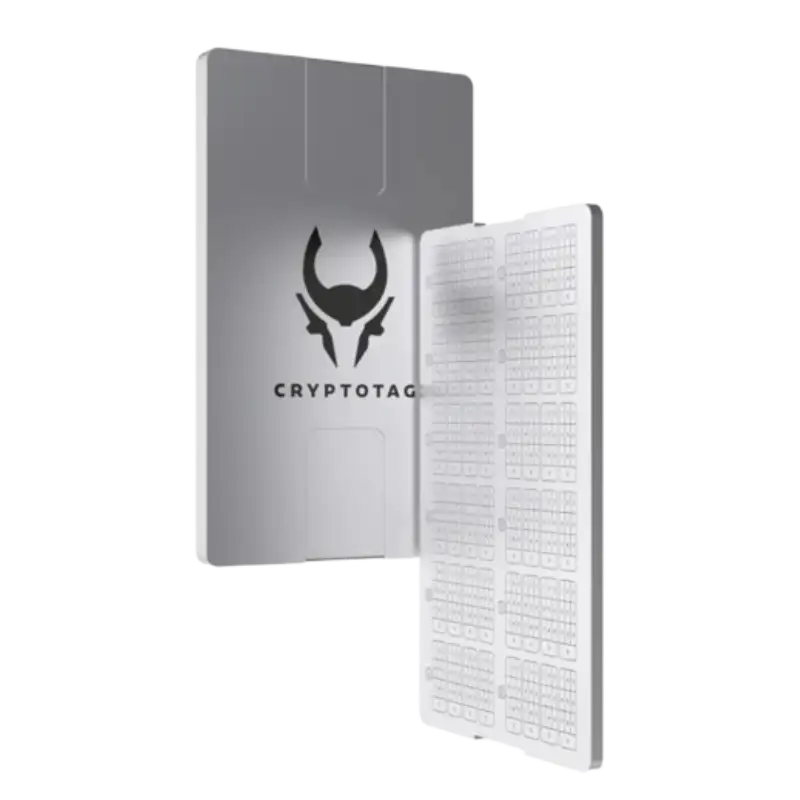
Cryptotag Loki
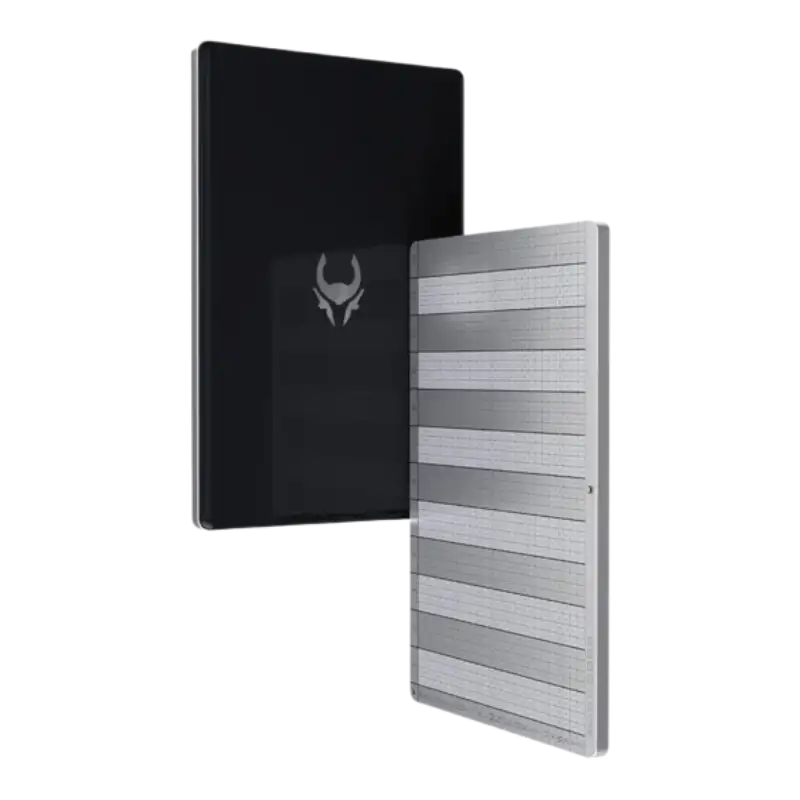
Capsule Solo
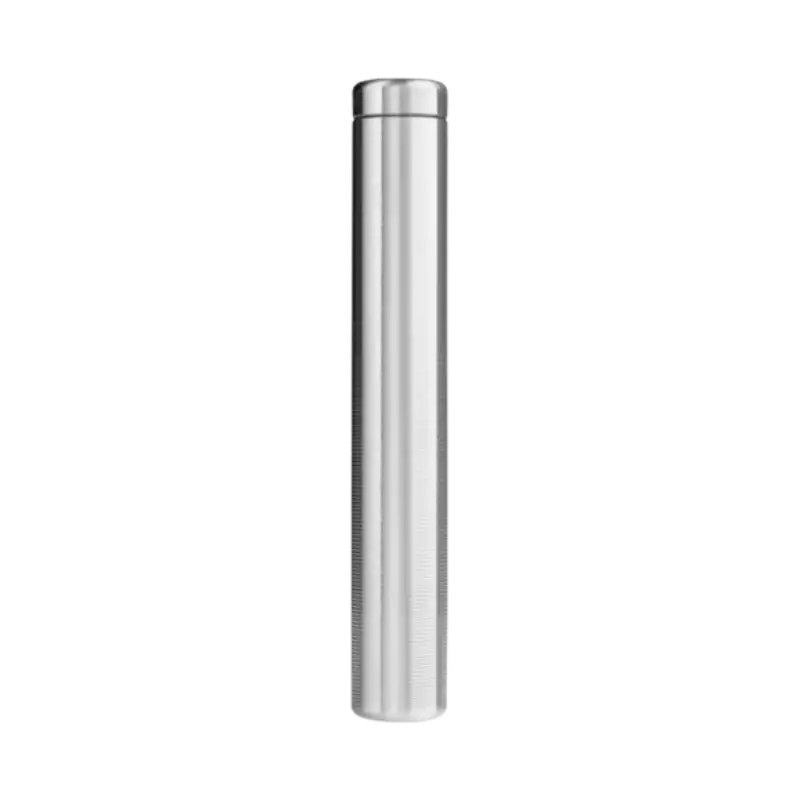
The Billfodl
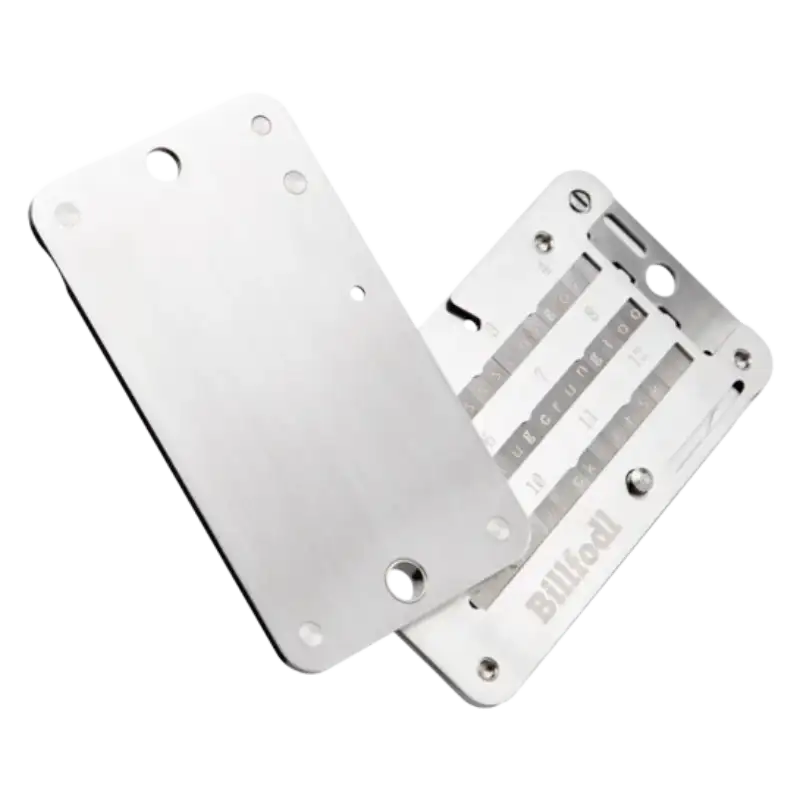
1. Design and Build Quality
The first impression of the Trezor Safe 5 is its clean, functional design. Trezor has stuck with a plastic build, but it feels sturdier than the earlier Model T. The edges are rounded, the weight is balanced, and the overall size makes it comfortable to hold during setup or day-to-day use. Unlike Ledger devices such as the Nano S Plus and Nano X, which rely on physical buttons and compact USB-stick designs, the Safe 5 puts usability first with a 1.54-inch color touchscreen. This larger screen makes navigation intuitive, particularly for tasks like confirming transactions or entering a PIN, where visual clarity is critical.
The tactile quality, however, does not scream “premium.” Compared to the Ledger Stax, which uses an E-Ink display and glass-like finish, or even the robust metal durability of backup solutions like the Cryptotag Zeus or The Billfodl, the Safe 5 feels more utilitarian. For many users, this trade-off is acceptable: it’s light, portable, and functional. But for those who want a device that feels as solid as their investment, it may come across as underwhelming.
Another noticeable aspect is the USB-C connection, which ensures compatibility with modern laptops and mobile devices. The lack of Bluetooth might limit convenience compared to the Ledger Nano X, which allows wireless transactions, but some users see this as a security benefit since fewer wireless connections mean fewer attack vectors.
In terms of portability, the Safe 5 is easy to carry and discreet to use. It doesn’t attract attention, which is a plus for security-conscious users. Still, the plastic body raises questions about long-term durability, especially if you plan to travel with it often. This is where pairing it with a metal recovery backup like the Cryptosteel Capsule Solo can add peace of mind, ensuring that even if the device is damaged, your recovery seed remains intact.
Overall, the Trezor Safe 5 prioritizes ease of use and accessibility over luxury. It’s practical for users who care more about function than flash, but those who value premium aesthetics or hardened durability might find Ledger’s higher-end options more appealing.
2. Security Features
The Trezor Safe 5 follows Trezor’s philosophy of open-source transparency, prioritizing user trust and auditability over sealed-chip protection. Unlike Ledger wallets such as the Nano X, Ledger Stax, or even the entry-level Nano S Plus, which use a Secure Element with closed-source firmware, Trezor exposes its code for public review. This approach is reassuring for users who distrust proprietary systems, but it does mean the Safe 5 lacks Ledger’s hardware-level isolation against tampering.
Here are the key security features of the Trezor Safe 5:
- PIN and Passphrase Protection: Standard safeguards that prevent unauthorized access if your wallet is lost or stolen.
- Shamir Backup: One of its most notable upgrades, letting you split your recovery seed into multiple “shares” (e.g., 3 out of 5 required to restore). This makes recovery more resilient than a single seed phrase.
- Open-Source Firmware: Full transparency for community auditing, ensuring there are no hidden backdoors.
- On-Device Confirmation: Every transaction must be confirmed on the wallet’s color touchscreen, eliminating the risk of remote malware approvals.
Where the Safe 5 lags behind Ledger is in physical security hardening; the absence of a Secure Element chip means it isn’t as resistant to advanced physical attacks. To compensate, many users pair it with metal recovery solutions like the Cryptotag Zeus, Cryptotag Loki, Cryptosteel Capsule Solo, or The Billfodl, which protect recovery phrases from fire, water, or corrosion.
Ultimately, the Safe 5’s security model favors flexibility, transparency, and backup resilience. It’s best suited for users who want control of their keys without relying on closed ecosystems like Ledger Recover or the Ledger Recovery Key, though advanced users may still prefer the extra physical protections found in Ledger’s hardware.
3. User Experience
One of the strongest reasons to consider the Trezor Safe 5 is its usability. From the moment you unbox the device, the setup feels approachable even for first-time crypto investors. The 1.54-inch color touchscreen plays a big role here, navigating menus, entering a PIN, or confirming a transaction is far less error-prone than the two-button system on devices like the Ledger Nano S Plus or Ledger Nano X. The larger display makes it easier to spot details such as addresses and amounts, which helps reduce mistakes and phishing attempts.
Setup is handled through Trezor Suite, a desktop and web-based application designed to manage your coins, tokens, and NFTs. The software is clean and intuitive, showing portfolio balances, transaction history, and tools for sending or receiving crypto. Compared to Ledger Live, Trezor Suite feels less polished visually, but it benefits from being fully open-source and more transparent. For advanced users, it also integrates well with third-party wallets, including MetaMask, Electrum, and others used for DeFi or Bitcoin-specific features.
Day-to-day use is straightforward. Connecting via USB-C is simple and reliable, though the lack of Bluetooth may feel limiting to users who value mobile flexibility, a gap Ledger Nano X fills. However, some users consider this absence an advantage, as wired-only use means fewer wireless attack vectors.
When compared with higher-end models like the Ledger Stax, the Safe 5 trades sleek design and premium feel for practicality. Its plastic body doesn’t wow, but the device is light, discreet, and functional. For most investors, the balance between ease of use and transparency makes it an attractive option. But if you want wireless connectivity or more visually polished software, you may find Ledger’s ecosystem a better match.
Overall, the user experience is where the Trezor Safe 5 shines: clear navigation, open-source software, and a simple setup process that makes it accessible to beginners, while still offering enough flexibility for experienced crypto holders.
4. Compatibility
Compatibility determines how practical a hardware wallet is for everyday crypto management. The Trezor Safe 5supports more than 9,000 coins and tokens, covering major cryptocurrencies like Bitcoin, Ethereum, and Litecoin, as well as ERC-20 tokens, stablecoins, and popular altcoins. It also integrates smoothly with Trezor Suite, which is designed for portfolio management, and extends support through third-party wallets such as MetaMask, Electrum, and MyEtherWallet. This flexibility allows Safe 5 users to engage in DeFi, staking, and token swaps without being locked into one ecosystem.
In contrast, Ledger wallets such as the Nano X, Nano S Plus, and Ledger Stax also support thousands of assets, but they manage app installations differently. Ledger devices have limited internal storage, meaning users must often shuffle apps when managing a broad portfolio. Trezor sidesteps this by not using installable apps for coins, offering a simpler plug-and-play system. However, Ledger still maintains stronger direct integrations with staking platforms and mobile applications, thanks to Ledger Live.
Where Trezor shines is in open-source compatibility. Developers and advanced users often prefer it because it integrates with a wider range of independent wallets. That said, some decentralized apps still prioritize Ledger due to its popularity, which can make Trezor feel less “mainstream” in certain environments.
For recovery and backup, the Safe 5 works seamlessly with metal storage tools like the Cryptotag Zeus, Cryptotag Loki, Cryptosteel Capsule Solo, and The Billfodl. This ensures that its seed phrases remain durable across fire, water, and corrosion, critical for long-term holders.
The Trezor Safe 5 is highly compatible for most users, especially those who value open-source flexibility and want to avoid app juggling. While Ledger devices still hold an edge in mobile convenience and direct staking integrations, Trezor makes up for it with broader wallet compatibility and simpler management of multiple assets. For users managing diverse portfolios or experimenting with DeFi, the Safe 5 is one of the most flexible options available, though Ledger Nano X and Stax may offer smoother experiences for mobile-heavy investors.
5. Backup and Recovery Options
Backup and recovery are the backbone of crypto security. If you lose access to your hardware wallet, your recovery method is the only bridge back to your funds. The Trezor Safe 5 introduces flexibility by offering both standard and advanced recovery approaches, giving users more control over how they safeguard their assets.
Here’s how the Safe 5 handles backup and recovery:
- 12/24-Word Recovery Seed: The standard method shared across most wallets, including Ledger Nano S Plus, Nano X, and Ledger Stax. The device generates a seed phrase that must be written down and stored securely.
- Shamir Backup: Unique to Trezor, this feature lets you split your recovery seed into multiple “shares.” For example, you can create 5 shares and require 3 to restore access. This reduces the risk of losing everything if one backup is misplaced or stolen.
- Passphrase Extension: An optional “25th word” that adds an additional layer of protection on top of your recovery seed. Even if someone has your full seed, they cannot access funds without this passphrase.
- Compatibility with Metal Backups: Since paper is vulnerable to fire, water, and wear, many users pair their seed with tools like the Cryptotag Zeus, Cryptotag Loki, Cryptosteel Capsule Solo, or The Billfodl. These indestructible backups ensure long-term durability.
- On-Device Recovery Check: The Safe 5 allows users to verify their backup by re-entering it on the device itself. This minimizes errors that often occur when seed phrases are written incorrectly or partially lost.
Compared to Ledger wallets, which rely solely on the standard recovery seed and external metal backups, the Safe 5’s Shamir Backup makes it stand out. It’s particularly useful for families, business partners, or individuals who want to distribute recovery responsibility across trusted people or locations.
In short, the Trezor Safe 5 offers one of the most flexible recovery systems available today. It addresses both everyday risks, like losing a slip of paper, and catastrophic risks, like fire or theft, especially when paired with a metal backup solution.
6. Pricing and Value
The Trezor Safe 5 is priced at around €169 (about $180, depending on region and taxes). At first glance, this positions it above entry-level wallets like the Ledger Nano S Plus but below premium models like the Ledger Stax, which carries a much higher price tag. For the money, users get a device that combines a large color touchscreen, strong coin compatibility, open-source firmware, and the unique Shamir Backup feature that Ledger does not offer.
The question for most buyers is whether these features justify the higher price compared to more affordable wallets. For casual investors who only hold a small amount of Bitcoin or Ethereum, the Safe 5 might feel like overkill. A Nano S Plus, which costs significantly less, still provides reliable cold storage. But for those managing a larger or more diverse portfolio, or for anyone who values open-source transparency and flexible recovery options, the Safe 5 justifies its premium.
It’s also worth considering the hidden cost of backups. While the device itself is priced fairly, most security-conscious users will invest in a metal backup solution such as the Cryptotag Zeus, Cryptosteel Capsule Solo, or The Billfodl to protect their recovery seed. This adds another layer of expense but is practically a necessity if you’re serious about long-term storage.
Overall, the Trezor Safe 5 sits in the middle ground between affordability and premium appeal. It is more costly than the basics but significantly less than ultra-premium wallets, and the features it offers, particularly Shamir Backup, make it a strong value for anyone who views crypto storage as a long-term commitment.
7. Competition: Trezor Safe 5 vs Ledger
When comparing the Trezor Safe 5 with Ledger’s popular models, the decision often comes down to whether you prefer open-source transparency or hardware-enforced security. Both brands serve long-term investors, but their approaches are distinct.
| Feature | Trezor Safe 5 | Ledger Nano S Plus | Ledger Nano X | Ledger Stax | Ledger Flex |
|---|---|---|---|---|---|
| Price (approx.) | €169 | €79 | €149 | €279 | TBD (dev tool, limited) |
| Build Material | Plastic | Plastic + Metal cover | Plastic + Metal | Glass + Premium | Flexible card-like |
| Display | 1.54” Color Touch | Small Screen, Buttons | Small Screen, Buttons | E-Ink Touchscreen | Minimal OLED |
| Connectivity | USB-C | USB-C | USB-C + Bluetooth | USB-C | USB-C |
| Secure Element | No | Yes | Yes | Yes | Yes |
| Firmware | Open-Source | Closed-Source | Closed-Source | Closed-Source | Closed-Source |
| Backup Options | Seed + Shamir | Seed only | Seed only | Seed only | Seed only |
| Software | Trezor Suite | Ledger Live | Ledger Live | Ledger Live | Ledger Live |
| Unique Feature | Shamir Backup | Affordable Entry-Level | Bluetooth Mobile Use | Premium UX + E-Ink | Thin, portable form |
Key Insights:
- Security Philosophy: Trezor leans on open-source firmware and Shamir Backup for resilience, while Ledger emphasizes Secure Element chips and hardware isolation. For users who prioritize transparency, the Safe 5 is more appealing; for those who want chip-level protection, Ledger wins.
- User Experience: The Safe 5’s touchscreen makes navigation more intuitive than button-based Ledgers like the Nano S Plus or Nano X. However, the Ledger Stax offers a more premium touchscreen with E-Ink technology, though at a much higher price.
- Portability and Connectivity: Ledger Nano X is still the best option for mobile users thanks to Bluetooth, a feature missing from the Safe 5. Trezor deliberately avoids wireless connections to minimize attack vectors, which some see as an advantage.
- Value for Money: The Safe 5 sits between the entry-level Nano S Plus and the mid-tier Nano X. It’s more expensive than the basics but delivers unique backup flexibility. For users who want a balance of security and usability, it feels fairly priced.
- Advanced Recovery: Shamir Backup sets the Safe 5 apart. Ledger wallets rely on the traditional recovery seed and, if extended, third-party solutions like the Ledger Recovery Key. Trezor’s native multi-share recovery is better suited for families or shared custodianship.
Who Should (and Shouldn’t) Buy the Trezor Safe 5
The Trezor Safe 5 is not a one-size-fits-all solution. Its strengths make it ideal for certain users, while others may find more value in Ledger’s lineup or in pairing their setup with dedicated backup tools.
The Safe 5 is a strong choice for users who:
- Value open-source transparency and prefer being able to verify the security model rather than trust closed systems.
- Manage diverse portfolios of Bitcoin, Ethereum, stablecoins, and altcoins, and want simple support for thousands of tokens without juggling apps.
- Prioritize backup flexibility, especially for families, business partners, or anyone who benefits from distributing recovery responsibility through Shamir Backup.
- Want ease of use with a color touchscreen and an intuitive interface that lowers the risk of mistakes compared to button-based wallets.
On the other hand, the Safe 5 might not be the best fit for:
- Mobile-first users may prefer the Ledger Nano X with Bluetooth connectivity for managing crypto on the go.
- Those concerned about physical tampering, as the Safe 5 lacks the Secure Element chip found in the Ledger Nano S Plus, Nano X, and Ledger Stax.
- Buyers seeking a premium build, since Ledger Stax’s glass and E-Ink design, or even pairing a basic Ledger with a Cryptotag Zeus metal backup, can feel more durable and high-end.
- Budget-conscious investors may find the entry-level Nano S Plus sufficient at less than half the price of the Safe 5.
In summary, the Trezor Safe 5 is best suited for long-term holders and security-conscious users who prefer transparency, advanced recovery methods, and simplicity in daily use. For those who prioritize mobile convenience, premium design, or tamper-resistant hardware, Ledger or a combined setup with metal backup tools like the Billfodl or Cryptosteel Capsule Solo may offer better peace of mind.
Final Verdict: Should You Get the Trezor Safe 5?
The Trezor Safe 5 is a wallet built for people who want control, flexibility, and transparency in how they protect their crypto. Its open-source design and Shamir Backup make it stand out from Ledger’s more closed ecosystem, and the touchscreen experience feels natural for both newcomers and seasoned investors. If you value clarity, ease of use, and a recovery system that doesn’t lock you into external services, the Safe 5 delivers.
That said, it isn’t for everyone. Users who need Bluetooth connectivity, a Secure Element chip, or a premium build may still prefer devices like the Ledger Nano X or Ledger Stax. And while its pricing is fair for the features offered, those with smaller holdings may find a Ledger Nano S Plus paired with a metal backup more cost-effective.
In the end, the Safe 5 is an excellent choice for long-term holders and those who trust Trezor’s open-source approach over Ledger’s closed-chip model. If you’re building a portfolio meant to last and want recovery options that go beyond the basics, it’s a wallet worth considering.
File Your Crypto Taxes in Less Than 20 Minutes,
Coinpanda

Coin Ledger

Koinly

Frequently Asked Questions [FAQs]
It supports over 9,000 assets, including Bitcoin, Ethereum, stablecoins, and ERC-20 tokens.
It upgrades the screen, improves durability, and adds Shamir Backup as a native option.
No, Trezor prioritizes open-source firmware instead of a Secure Element.
Yes, it integrates with MetaMask and other third-party wallets for DeFi and NFTs.
Not required, but it adds flexibility for those who want to split recovery shares.
It connects via USB-C; it has no Bluetooth support, unlike the Ledger Nano X.
Funds can be restored using your recovery seed or Shamir shares.
It’s recommended. Tools like Cryptotag Zeus or The Billfodl protect seeds from fire and water.
Did we help you out? Show us some support:
Ethereum Address

0xE7D047f1FA287f4ad298864535a62E45E789b445
Bitcoin Address

bc1q84w4qvaz5a2wne9xlf799s8we4q64a2yrttet8
Solana Address

52wokPhAncfZwGtTCHMycXGKKKAPENBw5yFTMewmpHQz

